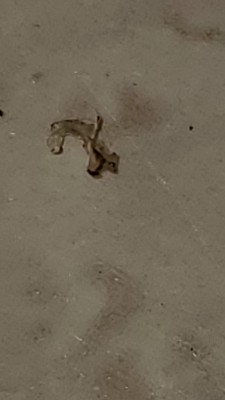
A previous reader of ours from Crystal Springs Florida, who wrote in about what he guessed was scabies, has contacted us again with a very interesting question. He asks, “how can we get the medical community to re-engage the parasitic population that is beginning to steadily increase, specifically around the gulf coast?”
He states that what he initially thought was scabies turned out to be schistosomiasis, which is a chronic parasitic disease one gets from exposure to infested waters. We must preface the rest of this article with a warning to our readers that we will include some pictures our reader sent us that exhibit how his condition has affected him physically. This includes photographs of various body parts that have wounds and scabs left by parasitic worms. The worms themselves are blood flukes, which are a class of parasitic flatworm known as a trematode. Either way, our reader now considers himself a part of a “parasitic population” that has apparently “steadily increased” along the gulf coast. When it comes to his question, we are not exactly sure what he means by the “medical community.” Perhaps this community consists solely of the people who practice medicine professionally (doctors/physicians/nurses), or maybe it also includes patients, medical researchers, medical students and so forth.
Whatever the case is, it is nonetheless an intriguing question, and an important one at that. Especially when it concerns GPs and doctors, who often have very little training in the field of parasitology. Because of this, many patients are unfortunately turned away when they come to their doctors for advice on the parasitic infections they are experiencing. Unfortunately, no matter how much we wish they could help more with parasitic infections — many not being able to afford seeing private physicians who are specialists within the area of parasitic infections — we are not capable of providing the training these doctors need. That said, what we can do is go to the root of the problem and make changes there; it starts at education. If parasitology was made a mandatory part of more medical syllabuses at the university and graduate school level, then perhaps it would become part of medical training later on, and then ultimately perhaps more doctors would be capable of treating parasitic infections. Contacting the principal or head of the medical faculty of a given university and letting them know about changes you want made within the syllabus might enact change if enough people come forth with the same request. Additionally, if any of our readers are medical students, and parasitology is not included in the syllabus, then they can also request these changes as feedback on their courses.
When it concerns specifically the population of parasite-infected people along the gulf coast, we cannot say what the best route is to go about getting the medical community to “re-engage” this population. When it comes to doctors and physicians, it is not exactly their responsibility to engage the patients, but rather it is the patient that comes to the doctor. Doctors cannot know if any one individual is suffering from a medical condition unless they come to them first. Contrarily, when it comes to medical researchers, there have been various medical papers written by experts on the subject of parasitic infections on the gulf coast and how much of a problem they are in the warmer regions of the world. This may be what our reader was referring to in using the word “re-engage”. Some of these authors, such as Sheila Jackson Lee, include congresspeople, who have a lot of influence over what goes on in their congressional district. It seems that some of them are also a part of the medical community. Thus, we suggest that the people on the gulf coast who identify with the parasitic population contact their local senators and congresspeople with the aim of trying to raise awareness of what is going on within these coastal states (this is specific to the United States, of course). Likewise, one could contact their local medical examiner with the same intention.
To conclude, this article has taken a brief look at the question of how we can get the medical communities within the gulf coast regions to engage the rising parasitic populations, and has attempted to provide some answers as to how we can do exactly just that. Unfortunately, there is not one quick solution, and there is not one right answer, but as long as we can get the discussion going again, and involve the governing bodies and places of medical practice in these discussions, we believe some real change can be made. Everything starts with education, because once we become aware of a problem and we acknowledge it as such, only then can we equip ourselves with the tools to actually fix it.
All About Worms is always free, always reader-supported. Your tips via CashApp, Venmo, or Paypal are appreciated! Receipts will come from ISIPP Publishing.
You might also find these guys interesting!













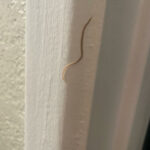

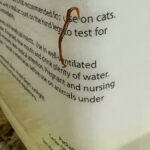

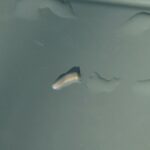
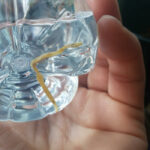
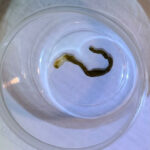






Let me tell each and every one affected by these aliens. And if there are any doctors reading these articles take note!
I just lost my finance my whole world because of these damn things. Been to doctors whom put it off as a mental disorder or bad hygiene. Give you a couple of pill and say this should take care of it. We have been fighting these diseases for two years. We were invaded by multiple species all at one time. Still don’t understand how this could even be possible, but it is as real as real gets. I am so hurt I loved my Sweet Shonda with all my heart and soul. She was the reason for my existence. And I am so angry. We reached out for help from so called friends and family and no one believed us Some say we’re on drugs and we’re nasty. To hell with them!!
I have experienced symptoms that make horror movies look like child’s play and it’s still happening. I’m talking about being eaten from the inside out. We have pinworms whipworms bot fly larvae liver flukes Blood flukes tapeworms morgellons and more I can’t recall at this time. I am so exhausted but I have to keep fighting. I am not exaggerating any of this. I have pictures of all these parasites and pics of when and where they are coming out of me from head to toe. Would someone please point me in the right direction to help rid of these parasites. I will and I want to spend the rest of life educating people to understand that parasitic diseases are very real and very deadly. It’s a shame that our government alllows big pharma and these all for profit doctors to turn there back on anyone that can’t afford these medicines that can treat these parasitic diseases. If there is a group out there making a stand against this I would love to be a part of it and in honoring my Sweet Shonda my whole word whom lost her life and shattered my soul because of this.
God knows same sh#t here! I don’t feel like going on sometimes but I manage to somehow. We need awareness and drs to take seriously everywhere. Well I’m on new river in southern Virginia. So if they were a problem in south then they made it here ya know because whats one of only 2 rivers that flow north? The New! Damnit , I’ve thought guinea worm and river blindness but damn if might be schistosomiasis! I’ll do whatever I can if there’s a movement or awareness campaign. Please inform me, if so!
I have been dealing You mentioned you have schistosomiasis. I believe I have the same. Around 3 years ago my husband & I submitted a sample through a website https://parasite.id/. Both are stool samples came out 98.88% & 99.96% confidence. I have been dealing with this nightmare since April 2014. Seen over 30 Dr’s. & Infectious Disease Speaciists who believe I’m on narcotics or just crazy. Having no hair due to the infection doesn’t help. I’ve taken on a average over 100 pics daily for the past 10 years which hasnt helped. Can I know how you were diagnosed with schistosomiasis ? I’ve also have gone through https://www.pushhealth.com to receive a prescription for Praziquantel. It is widely known to treat infections caused by worms (liver flukes) or schistosoma (blood flukes). Did I forget to mention my husband worked for the city as a Jetter Operator for over 48 years , many times being up to waste high in sewage water. He doesn’t experience such strong symptoms as I do. We believe because my immune system is much weaker due to psst surgeries. If you could please forward me any information or can point me in the direction of where I can receive medical attention, we’d be so grateful. We can’t afford to attempt to treat our conditions by ourselves. It’s affected us & our 1 bedroom apartment. Have no clue how to clean them. Monrhly foggers have done not one thing. I said enough. Thank you for your time.
I’m almost certain this is happening to me & my Granddaughter (6 yr)… Can Mold have anything to do with it…??? I have the same spots & sores all over me from scalp to the bottom of my feet… Feel something moving in the sores…
Granddaughter started getting spots about a month ago… She Loves sleeping in Nini’s bed… Every night… ?????????
Is it spreadable…??? “physicians” will NOT hear my pleas… I don’t know where to turn…
Incredible. I just sent in some photos of small parasites that look like this and cause the same “cat scratch” marks Along with the horrible sores.
I’m in California but having unfavorable water condition’s around and in my home.
I must note that I have morgellons disease as well but these parasites are in a Class of there own.
So tiny at first that you have to be looking very hard to see. I don’t know how to leave you a picture own this comment page. Maybe you can email me?!? My twitter account is the same as my name also, maybe a DM? They haven’t posted my resent question yet because you could have surly seen. I started seeing them when a itch would come, then it looked like a tiny scab but was the worm parasites trying to embed in me. What I found out was it only took a few minutes for them to lay larvae because when I used peroxide they came bubbling out. Finger nail beds infected as well. I hope you are able to contact me. One small thing also is that the tiny parasites when first bitten left a tiny red open wound but by the next day it had changed it’s size x3. Thank you for hearing me and a Big thanks to AAW.
If anyone does start any kind of awareness campaign or anything to help push this issue out of the shadows of darkness and despair and into the forefront of public health concerns please sign me up for the cause! I am 20 west of fort worth and know the struggle of this issue on a personal level.
C_*****@MS*.COM
817-798-9707